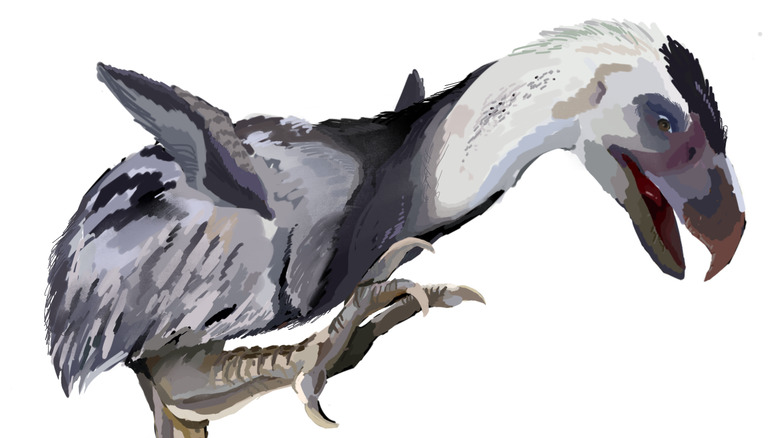The Scary Truth About The Extinct Titanis
Before the formation of Central America, South America was home to a vast array of unique, prehistoric animals. Giant sloths lumbered about its forests, while giant armadillos struck each other with their club-like tails and saber-toothed marsupial searched for prey (via Phys.org). Once the land mass connected with its northern neighbor, the two continents had an ecological exchange as animals migrated between them. Animals that migrated south are recognized as having done far better, since many South American animals could not compete with the new arrivals.
While today Cassowaries are considered the most dangerous living birds, this title went to a far different animal in the prehistoric Americas. Terror birds, or phorusrhacids, were some of South America's most fearsome predators. Their speed and size was virtually unmatched until the arrival of the north's large felines, at which point they began to decline. According to National Geographic, one member of this group that not only managed to survive this competition, but thrive upon moving north, was Titanis walleri. As one of the larger phorusrhacids at 5 feet tall, this animal terrorized North America for centuries.
Titanis likely pecked prey to death
Where their dinosaur ancestors would have often made use of teeth and bite-force to take down prey, terror birds like Titanis seem to have had a different approach. According to the BBC, Titanis would have been severely limited in what it could hunt, using its beak as the primary mode of killing prey. Studies of its skull and muscles revealed that Titanis was likely capable of swinging its head down onto larger prey — like a living bipedal axe. Once bludgeoned, Titanis would have then torn into its unfortunate victim.
Though Titanis was not the largest of its family, it was certainly the most successful, as no other terror bird is known to have established itself in North America (via National Geographic). Like its relatives and most other contemporary American megafauna, Titanis went extinct around 2 million years ago. Thankfully, its last surviving relative is not some giant monstrosity, but the small Seriema (pictured).

